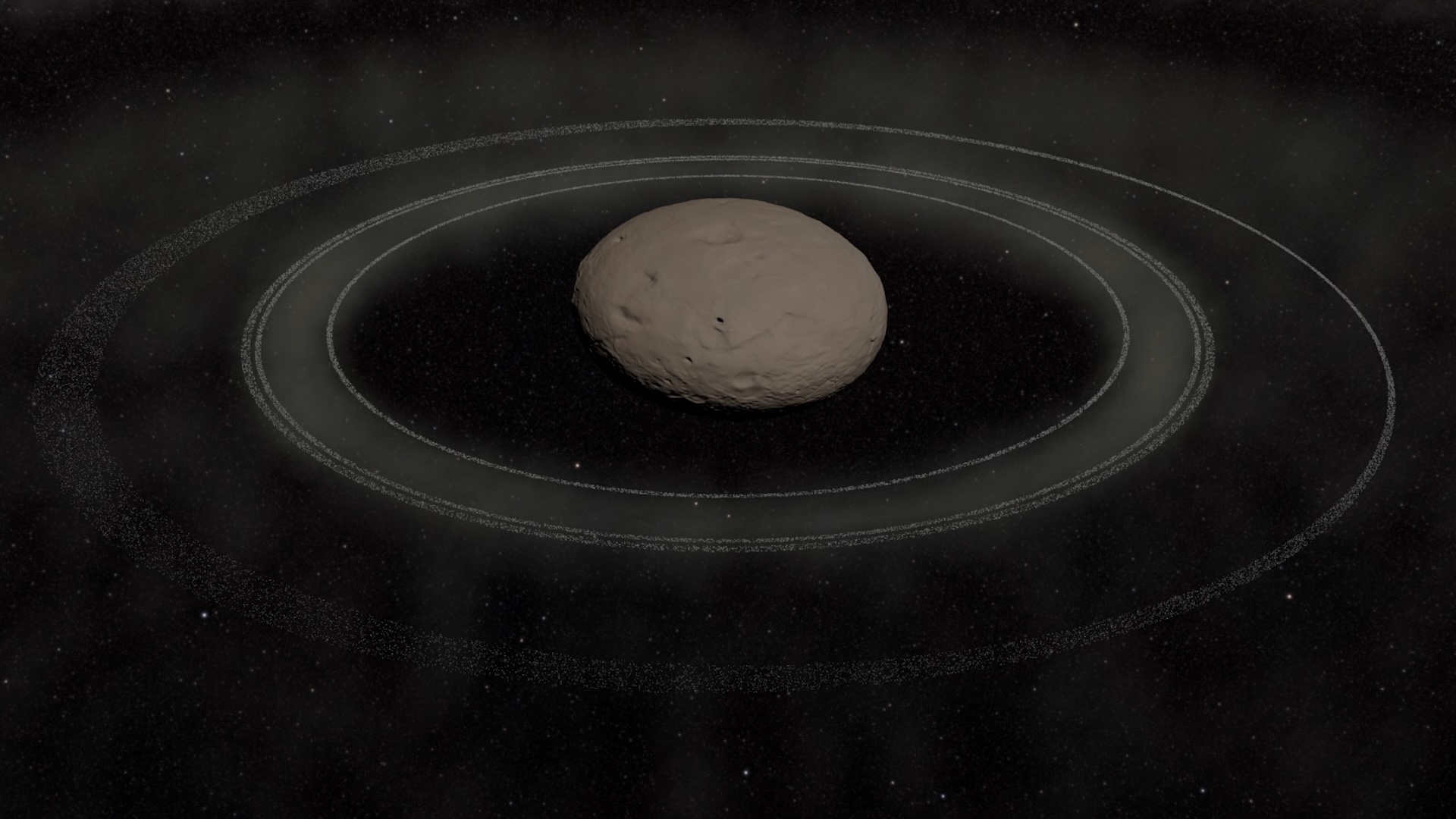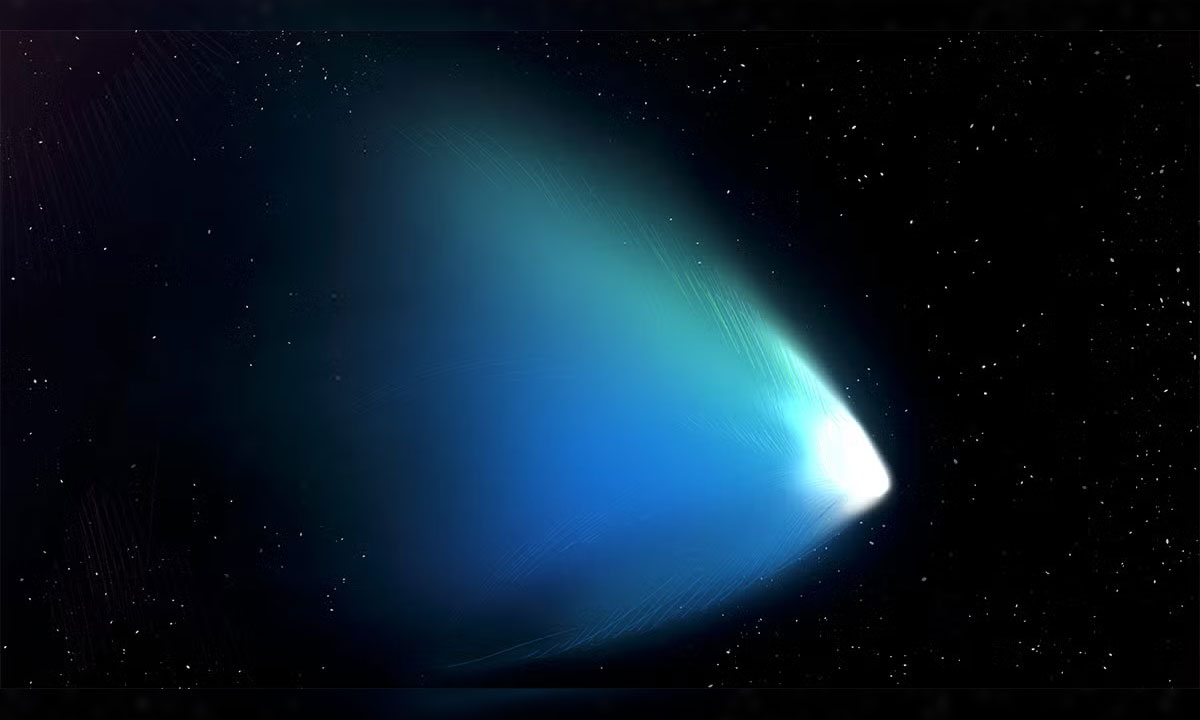Strange object between Saturn and Uranus is 'evolving' its own ring system, study suggests
Astronomers have found signs that the small icy world Chiron, orbiting between Saturn and Uranus, may be forming a new ring system in near-real time.

In a universe where change usually unfolds over eons, astronomers have gotten a rare front-row seat to watch a small, icy world beyond Saturn build a brand-new set of rings in real time.
A team of Brazil-based astronomers found that the bands of material orbiting around (2060) Chiron, a 125-mile-wide (200 kilometers wide) object that circles the sun between Saturn and Uranus, are new and still taking shape. The findings suggest that Chiron's surroundings are in a transitional state somewhere between a chaotic cloud of debris and a fully formed ring system, offering scientists a rare snapshot of ring formation in progress, which has never been directly witnessed before.
"It was an exciting surprise," Chrystian Pereira, a postdoctoral researcher at the National Observatory in Brazil who led the study, told Live Science. "In a way, it reminds us that the solar system is alive and continuously evolving, even on human timescales."
Chiron joins the asteroid Chariklo and dwarf planets Haumea and Quaoar as one of only four small worlds in our solar system known to host rings, but it may be the most dynamic of them all.
Chiron's changing environment, detailed in a paper published Oct. 14 in the Astrophysical Journal Letters, could help scientists understand how both small icy objects as well as giant planets like Saturn and Uranus built their iconic rings billions of years ago.
Rings in the making
Composed of rock, water ice and organic compounds, Chiron belongs to a strange population of objects called centaurs, which orbit between Jupiter and Neptune and behave partly like asteroids and partly like comets. Chiron orbits the sun once every 50 Earth years.
Since its discovery in 1977, astronomers have seen it occasionally brighten and even sprout a faint tail, evidence that it sometimes vents gas and dust into space.
Get the world’s most fascinating discoveries delivered straight to your inbox.
In September 2023, when Chiron briefly crossed in front of a distant star from Earth's point of view, the Pico dos Dias Observatory in Brazil detected tiny, repeated dips in the star's light. When the researchers compared this data to similar events cataloged in 2011, 2018 and 2022, they found that the three distinct, dense rings — orbiting at a distance of about 170 to 270 miles (270 to 430 km) from Chiron's center — had stayed in place for more than a decade.

In the 2023 data, the team also spotted a new disk-like structure stretching from about 120 miles up to 500 miles (200-800 km) around Chiron that hadn't appeared in previous data. The broader, diffuse disk likely formed only within the past decade, possibly from a collision or outburst that released fresh material into orbit, said Pereira.
Intriguingly, the team also discovered a faint outer feature nearly 870 miles (1,400 km) from Chiron — well beyond what's known as the Roche limit, the boundary where ring material should clump together into a moon rather than stay as debris, the new study notes.
"This is the first time we've detected any signature of material in that region," Pereira told Live Science, adding that higher-resolution observations are needed to confirm it. "Beyond that limit, particles forming a ring should naturally begin to coalesce into a satellite — yet something seems to be preventing that from happening."
The researchers aren't certain what caused Chiron's strange setup. One possibility is that volatile ices beneath its surface erupted in a comet-like outburst, ejecting dust and ice that later settled into orbit. Another is that a small moon shattered, scattering fragments that spread along Chiron's equator, according to the new study.
The latter theory could also explain Chiron's steady brightening over the past decade, which is hard to account for through cometary activity alone, Pereira said.
Other experts say the findings raise new questions about how rings around small bodies can survive for long periods.
"It may be that something is adding energy to these particles and allowing them to persist outside the limit without coalescing," Keighley Rockcliffe, a postdoctoral researcher at NASA Goddard Space Flight Center in Maryland who was not involved in the new paper, told Live Science via email.
It could also be that the ring is very diffuse or that it simply hasn't existed long enough to coalesce, Rockcliffe said. "Maybe it's recently formed and it hasn't had the chance to form a little centaur-let."
To confirm whether Chiron's rings are truly evolving, and not just appearing different from our changing vantage point, astronomers hope to capture more events in which Chiron passes in front of distant stars. Such events, when recorded with high-speed cameras at observatories across multiple continents, are the only direct way to see if the disk's material is changing in opacity, width, or position — signs that, according to Pereira, would reveal the dust and ice are being actively redistributed, offering direct evidence of ongoing evolution.
"The ideal scenario to satisfy our curiosity, however, would be a space mission dedicated to in-situ observation of this intriguing system," Pereira said.

Sharmila Kuthunur is an independent space journalist based in Bengaluru, India. Her work has also appeared in Scientific American, Science, Astronomy and Space.com, among other publications. She holds a master's degree in journalism from Northeastern University in Boston. Follow her on BlueSky @skuthunur.bsky.social
You must confirm your public display name before commenting
Please logout and then login again, you will then be prompted to enter your display name.


